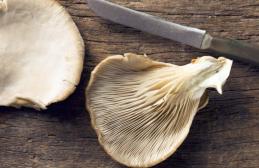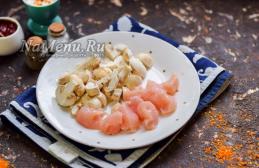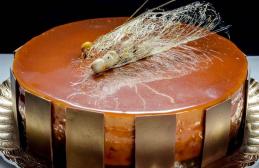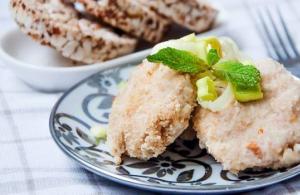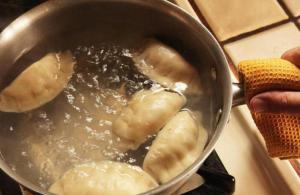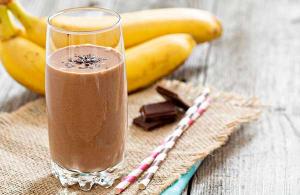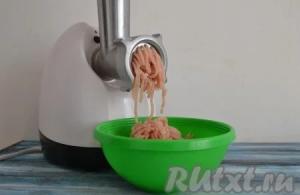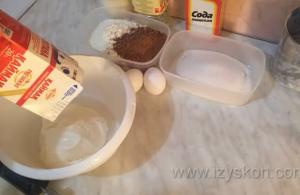The question of how to cook fish is asked by many housewives today. After all, prices for fish products in our stores are now steep, and the fear of spoiling the fish by improper preparation sometimes forces some housewives to completely refuse to include fish dishes in the family menu. But these fears are completely in vain! Well, really, how can you be afraid of preparing fish dishes in Russia, where the traditions of fishing and preparing a rich catch have been improved and honed by our ancestors for centuries? Take my word for it, cooking fish so that it turns out juicy, tender, aromatic and very tasty is not at all difficult, the main thing is to know and remember some simple rules and culinary subtleties that we inherited from our grandmothers. They knew exactly how to cook fish, and not just cook it, but make it a real table decoration, the main dish of both the holiday and everyday menus.
Of course, not only Russian, but also the entire world cuisine is rich in a wide variety of ways to prepare fish dishes. And yet, Russian fish cuisine is distinguished by its originality, clarity and closeness to our modern idea of how and what can be prepared from fish. In general, the popularity of fish dishes in our country is not at all difficult to explain. Historically, Slavic tribes settled along the banks of rivers, which not only served them as a natural protective barrier from enemies, not only as transport arteries for trade, but also as a rich source of excellent healthy and tasty fish products. After all, even today fishing is one of our most common and favorite pastimes, both useful for the household and pleasant to soothe the stomach.
We should not forget that such a wide spread of a wide variety of fish dishes was greatly facilitated by traditional church fasts, when fish dishes were allowed to be served on almost all days, except, perhaps, especially strict fasting days.
And so it turned out that the incredible richness of the assortment of fish dishes is not just a tribute to fashion, but a tradition that has developed over centuries, a whole layer of our own history, which has firmly taken root in our culture and, of course, in our kitchens. Russian cuisine offers us all kinds of fish dishes: here there is boiled fish, baked fish, and fried fish; steamed fish, which was cooked in a frying pan covered with a lid; here you can find “fixed” fish - stuffed with porridge, and “telefy” fish - stuffed with minced fish. And the methods of serving fish differed in considerable variety: fried fish was served with berry, onion or cabbage infusions, sprinkled with brine, vinegar or lemon juice. Steamed fish was served with pickles, lemons and herbs. They baked fish in aromatic nut oils, and did not forget about fragrant herbs and a wide variety of spices. And how many fish pies and pies, rasstegai, zraz and rybniks have survived to this day in their almost unchanged form! And today, traditional Russian fish cuisine is still as popular and beloved among the people as it was many centuries ago.

That is why the Culinary Eden website decided to collect and write down for you the most important tips and cooking secrets that will help even the most inexperienced housewives get acquainted with traditional Russian cuisine and learn how to cook fish.
1. Today you can find almost any fish on sale, even the most exotic ocean fish, but most of us still give preference to the more familiar river or sea fish. River fish is available to us in the freshest form throughout the year, especially for those who are keen on fishing and those who know fishermen. River fish differs from sea fish in its more pronounced taste and aroma, although the abundance of small bones and often hard scales somewhat complicates the preparation of river fish. Sea fish, which is much more delicate in taste and easy to prepare, is available to most of us only in frozen form. After all, the periods of industrial procurement of many types of sea fish are strictly limited to certain seasons, and the delivery of such fish from remote coastal areas to the central regions of our country in fresh or chilled form is practically impossible.
2. When choosing fresh or chilled river fish, pay special attention to its freshness. Good fresh fish has slightly moist shiny scales, transparent bulging eyes, bright red gills, its carcass is dense and elastic, and the smell is light, with notes of river water and algae. If the fish offered to you has a clearly stale aroma, the smell of “fish” or ammonia, if its eyes are sunken and clouded, the gills are faded or, on the contrary, too dark, the scales are cloudy, and the carcass is limp, wrinkled, with a swollen abdomen - refuse the purchase. You won’t be able to prepare a tasty dish from stale fish, and it’s easy to get poisoned by such fish.

3. If your choice falls on frozen sea fish, first of all make sure that the layer of ice covering the carcass is thin and completely transparent. A white, too thick layer of ice that looks more like snow will tell you that the fish was stored incorrectly, and it may have been defrosted and re-frozen more than once. It is better to refuse to buy such fish. Also, you should not buy frozen sea fish if its carcass has obvious numerous signs of damage, if the carcass is not completely covered with ice, and if the open parts of the fish are windy and darkened. Defrost frozen sea fish at a low temperature, placing it in the lower compartment of the refrigerator. This will allow your fish to fully retain its taste, juiciness and softness.
4. Cleaning fresh river fish from scales often turns out to be a real torture for many housewives. But there is nothing complicated about it! The secret to careful cleaning is very simple: place the fish in a plastic bag, head down, firmly grasp the fish by the tail with one hand, and equip the other hand with a regular tablespoon; remove the scales with a spoon, starting from the tail of the fish, right on top of the bag - this way all the scales will remain in the bag, and you will only need to rinse and gut the clean fish. There is another way to clean fish from scales without dirtying the whole kitchen with it: fill a sink full of water, immerse the whole fish in water and clean it of scales using a special grater for cleaning fish - all the scales will remain in the water and will not scatter throughout the kitchen . The second method also has its downside - cleaning the sink from sticky scales without clogging the drain is not the most pleasant task.
5. Have you dealt with the scales? Now your fish needs to be gutted and, if necessary, filleted. To gut the fish, carefully cut through the belly with a thin, sharp knife, from the anus to the head. Be careful: when cutting the belly, try not to damage the gall bladder, which is located next to the liver, close to the head of the fish! Remove all the innards from the belly of the fish and carefully scrape off the black film and blood clots from the inside near the spine. Then remove the gills: simply pluck them out with your fingers, trimming lightly with sharp scissors if necessary. Rinse the gutted fish thoroughly inside and out under cool running water, then dry the fish by blotting it with paper towels or napkins, and finally sprinkle with a small amount of lemon juice or table vinegar - this will improve the taste of the fish and relieve it of a specific smell.

6. For some recipes you will not need a whole fish carcass, but only its fillet. Of course, you can buy ready-made fillets in any store, but the trouble is that when you buy a fillet, you can’t be sure that the fish from which the fillet was taken was fresh. At the same time, removing fillets from fresh fish with your own hands is not at all difficult. All you need is a convenient cutting board and a sharp thin knife. First of all, clean and gut the fish, do not cut off the head and tail. Place the fish carcass on a board and make a deep transverse cut just below the gills. Insert the knife into this cut and, holding the fish by the head, carefully cut off a piece of fillet along the ridge. Turn the fish over and repeat. You end up with two pieces of boneless, skin-on fillet. To remove the fillet from the skin, place the fillet skin side down, and then, holding the skin on the tail side with a fork, cut the fillet at the very edge and in one motion, pressing a sharp knife firmly against the skin, cut off the fillet. So, with a few simple movements of a sharp knife you can easily get an excellent, fresh fish fillet without skin and bones.
7. Very often housewives complain that when frying, even fish breaded in flour sticks to the pan and falls apart into pieces. You can avoid this with a little culinary trick. Clean, rinse and dry your fish. If desired, rub it with spices, but do not add salt. Heat a couple of tablespoons of vegetable oil in a frying pan, and then sprinkle the bottom of the pan with coarse salt. Place the fish on salt and fry, depending on the size of the carcass, for 5 - 10 minutes on each side, over medium heat. With this frying method, your fish will not need breading at all, it will never stick to the bottom of the pan, and it will absorb exactly as much salt as necessary. Try it, it's very simple and delicious!
8. Carp “stuffed” with buckwheat according to an old Russian recipe turns out to be very tasty. Scale, gut and remove the gills from two medium-sized carp. Do not remove the head and tail; be sure to save the milk, if any. Heat a dry frying pan over high heat, add ½ cup of buckwheat and heat for a minute, stirring frequently. Then pour in one glass of boiling water, add a pinch of salt, reduce the heat to very low and cook the buckwheat under the lid until all the water is absorbed. The cereal should be slightly undercooked, slightly crispy. In a separate frying pan, heat 2 tbsp. spoons of olive oil, add one chopped onion and fry until golden brown, then add fish milk, cut into small pieces, and fry, stirring, for another couple of minutes. Remove from heat, transfer to buckwheat, add 2 tbsp. spoons of sour cream, one chopped clove of garlic and 1 tbsp. a spoonful of dill. Stir and cool slightly. Stuff the carp tightly with buckwheat mince and place on a baking sheet greased with oil and sprinkled with coarse salt. Bake in an oven preheated to 200° for 15 minutes, then remove the carps from the oven, brush with sour cream and return to the oven for another 20 minutes.

9. Pike is often criticized for the coarseness of its meat and its special taste. And completely in vain! Properly cooked pike turns out very juicy and tasty. Try cooking steamed pike with sour cream and horseradish. Scale and gut one pike weighing about two kilograms. Cut off the head and tail, and cut the pike carcass into large portions, place in a deep basin and fill with cold milk. Leave for 3 hours, then rinse with water and dry. Squeeze 8 tbsp from the juice. spoons of grated horseradish (freshly grated is best, but canned table horseradish is also possible). Don't pour out the juice! Melt 3 tbsp in a saucepan. spoons of ghee or butter, add horseradish and fry until golden brown. Grease a deep frying pan with a thick bottom with butter, sprinkle with salt, place pieces of pike, sprinkle with black pepper. Place fried horseradish on top of the fish and place a couple of bay leaves. Mix together 800 gr. sour cream and all the squeezed horseradish juice, lightly salt and pepper. Pour the resulting sauce over the fish, cover the pan with a lid and place on low heat for 30 minutes. When the time is up, remove from heat and let sit for another 10 minutes. Serve with boiled potatoes and pickles.
10. It’s very easy to prepare delicious pike perch baked with lemons. Clean, gut and cut two kilograms of pike perch into large portions. Mix together 2 teaspoons salt, ½ teaspoon black pepper, ½ teaspoon ground cardamom, 1 teaspoon dried dill. Rub the mixture onto the pike perch pieces and leave in a cool place for 30 minutes. Cut a couple of lemons into thin slices. Take a piece of foil, place a small piece of butter, two pieces of pike perch and a couple of lemon slices on it. Twist the ends of the foil tightly to the top. Repeat with all remaining fish pieces. Place the fish wrapped in foil on a baking sheet and place in an oven preheated to 180° for 40 minutes. Remove the finished fish from the oven, unwrap the foil, place the pieces of pike perch on plates and pour over the lemon sauce formed during baking. Serve boiled potatoes with fresh dill and butter as a side dish.
And on the pages of “Culinary Eden” you can always find even more useful tips and proven recipes that will definitely tell you how to cook fish.
The meat of the inhabitants of salt waters is tougher and less fatty, so the heat treatment should be deeper, but not very long.
I think there is no need to convince you of the benefits of sea fish. Moreover, not so long ago we already found out what the advantages of sea fish are. Now I propose to talk about what you need to do to get a truly tasty and healthy dish from sea fish.
The meat of the inhabitants of salt waters is tougher and less fatty, so the heat treatment should be deeper, but not very long. When boiled or stewed for a long time, sea fish completely loses its structure, turns into an unappetizing and tasteless mass, and most importantly, prolonged exposure to heat contributes to the loss of vitamins.
Thirdly, when buying sea fish, you need to take into account that after cleaning and gutting, only one third may remain of it. Therefore, buying fish fillets is often both more profitable and convenient. By the way, the heads of fish that live in seawater are never used for food, since it is in it that harmful substances are deposited.
Next... You must remember that if you buy frozen fish, you need to defrost it before cooking. This can be done in cold water, and to prevent the loss of minerals in the water in which the fish thaws, you need to add table salt (at the rate of 5 g per 1 liter of water). But what you should never do is use warm and hot water, since after defrosting the fish will become flabby, tasteless and lose all its beneficial substances. Fish fillets are defrosted in the usual way without using water. After thawing, both fish and fillets should be rinsed with cold water.
Sea fish is cut in different ways (it depends on what you want to cook from it), but there is still a general sequence of actions:
1. Remove the dorsal fin.
2. Clean the fish from scales (start from the end).
3. After cleaning, we make a longitudinal incision on the belly.
4. Carefully gut the fish so as not to damage the gallbladder.
5. Wash the fish and cut into pieces of the required size.
Bon appetit, good health and well-being!
The recipe is basic for preparing almost any sea fish, it can be modified by adding seafood at your discretion.
A special feature of this method is the relative speed of execution of “Poisson du mer”.
Sea fish in Norman style
Ingredients for the Normandy style sea fish recipe
For 6 servings:
- sea fish fillet – 1800 g;
- shallots – 400 g;
- carrots – 200 g;
- mushrooms – 800 g;
- Calvados -150 ml;
- cream - 340 g;
- olive oil – 50 ml;
- milk – 50 ml;
- butter - 160 g;
- greens – 30 g;
- salt and pepper to taste.
Instructions for preparing the Normandy style sea fish recipe:
- Dip the cleaned fish fillet in Calvados for 10 minutes, remove and lightly pepper with white pepper and add salt. Place a “platform” of chopped shallots, carrots, and fennel sprigs on a baking sheet with high edges. Drizzle with lemon juice and olive oil.
- Place the fish fillet on top, covering it with a “snow-white coat” of whipped salted cream. Pour the remaining Calvados onto the onions and carrots on the sides of the baking sheet.
- The oven should be preheated to 200 degrees, the fish will be baked for 30 minutes.
- While baking the fish, you can cook the mushrooms by poaching them in butter with the addition of milk. After 15 minutes, the mushrooms are ready, they should be removed into a separate bowl, lightly add the butter sauce in which they simmered. Cover with a lid and keep warm.
- Remove the fillet from the baking sheet and place it on a warmed platter, leaving room for the mushroom garnish. If desired, arrange mushrooms, onions and carrots between the fillets, sprinkle with fresh parsley or fennel. It is advisable to cover the dish with a lid so that the fillet does not cool down. Serve warm, garnish with boiled potatoes or green peas.
- Alternatively, rub the vegetables baked in the oven along with the fillet through a sieve and stir into the mushroom sauce. The fish juice formed in the pan can also be added to the sauce for a piquant taste.
- It is served with croutons or potato croquettes if boiled potatoes are not included in the side dish.
Baked sea bass with vegetables

Having found a recipe for sea bass in the oven baked with vegetables on a card from some culinary magazine, I didn’t even expect that it would turn out so tasty! The aroma and taste of sour cream sauce with white wine, stewed vegetables and seasonings combine wonderfully with each other, merging into an exquisite symphony. The dish is worthy of a restaurant! Tender fillet with orange carrots and green peas looks appetizing and tastes amazing.
Ingredients:
- 6 sea bass fillets;
- 1 carrot;
- 1 large onion;
- 100 g green peas (fresh or frozen);
- 50 g butter;
- 100 ml sour cream;
- 100 ml white wine;
- 200 ml water (1 glass);
- 1 yolk;
- 1 tablespoon lemon juice;
- 1 teaspoon sea salt (or to taste);
- ¼ teaspoon white pepper.
Water can be replaced with broth; white pepper - ground black, butter - vegetable oil, and do not use wine. But in this case the taste will be different! It is the light aroma of wine and creamy taste that distinguishes this dish from a simple fillet with vegetables in the oven. White pepper has a more delicate taste.
Recipe for sea bass with vegetables:
- Rinse the fillet, dry it with a paper towel, add salt and pepper with half the spices, and sprinkle with lemon juice.
- Peel the onions and carrots, wash them, chop the onion finely, and grate the carrots on a coarse grater.
- Melt half the butter in a frying pan (it’s convenient to use a cast iron pan, one that can then be put in the oven). Fry the onion in melted butter, stirring, for 2 minutes.
- Then add grated carrots and peas. Fry for another minute or two.
- Place the fillets in the pan with the vegetables. You can transfer it into a baking dish (solid) at this stage. Pour in 100 ml of water and 50 ml of white wine (I used old champagne that was left over from the New Year celebrations). Add pieces of remaining butter. Cover with foil.
- Place in the oven and bake at 200C for 20-25 minutes.
- Mix the yolk with sour cream.
- In the meantime, heat the rest of the wine mixed with water in a cast iron (50 and 100 ml, respectively). Remove from heat as soon as it begins to boil, and pour into the sour cream-yolk mixture in a thin stream.
- Take the frying pan out of the oven and evenly pour the sauce over the fish and vegetables with a spoon. Place in the oven for another 5 minutes, no longer covering with foil.
- What aromas waft through the kitchen!.. Sea bass with vegetables is a very tasty dish, and most importantly, much more dietary and healthier than fried fish. You can serve potatoes or rice as a side dish.
Sea fish fillet with potatoes in pots

Ingredients:
- 500 g sea fish fillet (pollock, hake);
- 3-4 potatoes;
- 1 carrot;
- 1 onion;
- 2 salted or pickled cucumbers;
- 2 tablespoons of tomato paste;
- 1 glass of water;
- 30 g butter (can be replaced with vegetable oil);
- Salt, black and red ground pepper.
How to cook fish in a pot with potatoes:
- Finely chop the onion and fry lightly in oil.
- Grate the carrots on a coarse grater and fry them with onions.
- Peel the potatoes and cut into thin slices.
- Thaw the fish fillet and cut into small pieces.
- Now we put the ingredients in pots: carrots and onions; potato slices; diced pickles; fish fillet.
- Then add a spoonful of tomato to the pots and pour in half a glass of water. Don't forget to add salt, taking into account the fact that cucumbers are pickled! It will also be delicious if you add a little black and red pepper.
- Place the fish in the pots in the oven and cook for 45 minutes. Then carefully take out and put 1 tablespoon of sour cream or cream into the pots.
- We also sprinkle with green onions or dill, cover the pots with lids and put them back in the oven, which you can now turn off - the dish will arrive in hot pots.
- Fish and chips in pots is a great alternative to familiar recipes such as hake in foil. And if you prepare the dish without potatoes, it can be served as a gravy for various side dishes.
Tuna baked with lemon

Ingredients:
- 1 fresh frozen tuna;
- Salt, ground pepper or a mixture of peppers - to taste;
- Lemon juice from 0.5 lemon;
- Vegetable oil - 0.5 tablespoon.
How to cook tuna in its own juice:
- Clean and wash the fish, dry it with a napkin and place it on a sheet of baking foil greased with vegetable oil, so that the shiny side of the foil is on the outside and the matte side on the inside.
- Rub the fish with spices outside and inside. I took table salt and ground black pepper. A more refined option is sea salt and a mixture of peppers.
- Sprinkle tuna with lemon juice and wrap in foil.
- Place on a baking sheet or in a mold, pour a little water on the bottom, and bake in the oven at 180C for 40-50 minutes, depending on the size of the fish.
- Serve baked tuna with a side dish of boiled rice, fresh or baked vegetables, salad or potatoes.
Baked pink salmon in a sleeve with potatoes

Ingredients:
- Fresh frozen pink salmon – 1 piece;
- Potatoes – 8-10 pieces;
- Carrots – 1-2 pieces;
- Onion – 1 piece;
- Salt, ground black pepper to your taste, lemon juice - optional.
How to cook pink salmon in the sleeve:
- Lightly scrape the fish - pink salmon usually have few scales - and rinse under the tap. Rub it with salt and put it in the sleeve - cut off enough of the sleeve so that there are 20 centimeters of free ends left at the edges. This is necessary so that later you can tie the sleeve.
- Peel and wash the vegetables. Cut the potatoes into slices, as if for a roast; carrots - in circles, and some can be coarsely grated; cut the onion into half rings.
- Mix everything, salt and pepper.
- Place the vegetable mixture in the sleeve, around the pink salmon, and tie the ends of the sleeve tightly, releasing the air from it.
- Place the sleeve on a baking sheet or in a mold and put it in the oven.
- Bake pink salmon with potatoes for an hour at 200C.
- Serve warm, immediately after cooking. By the way, food in the sleeve retains heat for a long time - very convenient if you prepare a dish before the whole family gathers at the table.
Baked pink salmon with potatoes is not the only option for cooking red fish in the oven. A nice saleswoman in a fish store told me that pink salmon can be baked in foil or on a baking sheet, with cheese or lemon... So let's experiment - cook with fire! And I will definitely share all the new recipes for the oven with you. So come on in!
Alexander Gushchin
I can’t vouch for the taste, but it will be hot :)
If you are looking for how to deliciously cook fish in the oven, then pay attention to useful tips that will help the dish develop. Fish dishes should be included in a person’s diet and diet in order to supply him with healthy omega acids. A delicious fish dish is easy and correct to prepare if you know the recipes that guarantee results.
What kind of fish is best to bake in the oven?
Housewives at home bake fish in the oven, for which they choose varieties with a high fat content. This condition is necessary to prepare a fragrant and juicy dish, not dry and healthy. For baking, it is better to use sea species - salmon, salmon, tilapia, butterfish, blue whiting, but river species - carp, carp, bream - will also work well.
Dry small rock can be tasty if flavored with butter or olive oil. The choice of fish variety depends only on the desires and capabilities of the housewife, because any variety is suitable for baking - even a particularly large species will turn out tasty if you cut it into steaks and marinate it properly. If you choose pike with many small bones, you can keep it longer so that the bones soften. These are the secrets of how to properly cook fish in the oven.

How to deliciously bake fish in the oven
If you want to learn how to properly prepare a delicious, delicious dish, it is important to consider at what temperature to bake fish in the oven. This can be done at 180 degrees, baking the product in foil or a pot. It is also important to consider how to properly cook fish in the oven - the pieces are wrapped in foil and cooked for up to 10 minutes if they are thin, and up to 20 minutes if the pieces are thicker than 2.5 cm. A whole carcass can be properly cooked in 25-30 minutes by wrapping it in foil to avoid unpleasant odors.
The foil wrap also helps distribute the heat evenly, preventing the dish from burning. In parallel with baking the main dish, you can also prepare a side dish - vegetables, cereals. By concentrating the temperature inside the foil wrapper, the product cooks quickly, retaining all the flavors. For spices you should use salt, pepper, lemon juice, and for a piquant taste you can try adding coriander, ginger, and nutmeg.
How to cook fish with lemon and mustard in foil
To make a delicious dietary recipe for cod with lemon and mustard, suitable for baking with a foil wrapper, you will need:
- cod or pollock – 800 g;
- lemon – 1 pc.;
- salt, pepper, mustard;
- onion – 1 pc.;
- carrots – 1 pc.;
- parsley – 1 bunch;
- butter – 100 g.
Steps on how to bake fish in foil in the oven:
- Wash the cod, cut off the head if there is one, squeeze lemon juice on top.
- Rub the inside of the carcass with salt and pepper, coat the top with mustard.
- Chop onion, carrots and fry parsley.
- Coat the foil with butter, lay out the cod, previously stuffed with half of the vegetables, pour the other half on top, and close by joining the ends.
- Preheat the oven, place the cod with the remaining butter on top.
- Bake for 20 minutes, open to brown, leave for 10 minutes.
- A great side dish would be boiled or fried potatoes, salad, and mushrooms.

Recipe for cooking fish in the oven with potatoes without foil
If there are no foil materials in the house, then the fish dish can still be prepared correctly to obtain taste, aroma and juice. What you will need for the recipe with high-calorie potatoes:
- pike perch – 0.5 kg;
- potatoes – 1 kg;
- salt, pepper, basil, herbs;
- flour – 2 tbsp;
- vegetable oil.
Step-by-step recipe for cooking fish in the oven with potatoes without foil:
- Clean the pike perch, wash it, fillet it tenderly, add salt and pepper.
- Peel the potatoes, cut into slices, sprinkle with pepper, salt, basil, pour over oil, fry a little.
- Roll pike perch in flour and fry a little.
- Place 2 layers of potatoes on a baking sheet, place pike perch between them, bake for 40 minutes.
- Readiness is determined by frying the potatoes, and when the product is cooked, you can sprinkle it with herbs and serve with salted tomatoes and sauerkraut.

River fish in the oven with sour cream and cheese
A simple fish dish baked with cheese and sour cream is especially tasty. To prepare it correctly you will need the following products:
- crucian carp, catfish or perch – 1 kg;
- onion – 1 pc.;
- cheese – 200 g;
- spices;
- sour cream - 1 jar.
How to bake fish in the oven:
- Clean the crucian carp, wash it, make cuts on the abdomen.
- Finely chop the onion and mix with grated cheese.
- Grease the surface of the fish with sour cream, and put the onion-cheese mixture inside. If the carcass is small, then you don’t have to put it inside - pour the sour cream and cheese mixture with onions on top.
- Transfer the workpiece into a baking dish coated with oil, pour in the remaining sour cream, add spices.
- Bake for 30 minutes.
Baked fish with cream in pots
Not only foil or casserole dishes help to prepare fish dishes correctly - they also turn out well using pots. For a recipe for baked fish fillet with cream this way you will need:
- fish fillet with white dense flesh – 300 g;
- onion – 1 small onion;
- cheese – 150 g;
- high fat cream – 100 g;
- water – 1/4 cup;
- salt, pepper, garlic.
How to properly cook baked fish in the oven:
- Cut the fillet into medium pieces, the onion into half rings.
- Grate the cheese, prepare the cream.
- Take a pot, put some onion and cream on the bottom, put the fillet, add spices, put the onion, cream, and some cheese again.
- Repeat until the pot is completely filled, add the remaining cheese, salt, and add grated garlic.
- Heat the oven and leave for half an hour.
- Serve the baked dish directly in the pot, garnished with herbs.

Red fish with vegetables in the oven
Healthy red fish meat will be incredibly soft and juicy if baked with vegetables. To prepare you will need:
- salmon, pink salmon, chum salmon or salmon – 1 kg;
- carrots – 1 pc.;
- onion – 1 pc.;
- cheese – 100 g;
- salt, black pepper, seasonings.
How to properly cook red fish in the oven:
- Clean raw salmon from gills, scales and tail, cut off the head, rinse, cut into steak pieces, add salt and spices.
- Cut the carrots and onions into large strips, simmer in a frying pan until fully cooked - first fry in oil, add a little water, simmer.
- For salmon, make portioned boats out of foil, put vegetables and steaks there. If desired, you can grease with mayonnaise or marinate fish steaks in advance in lemon juice with bay leaf, and soy sauce.
- Sprinkle with cheese and bake for half an hour until golden brown and crispy.
- Serve with lemon juice or ketchup and sprinkle with white pepper.
Video recipes: how to cook whole fish in the oven
Found an error in the text? Select it, press Ctrl + Enter and we will fix everything!
Fish and dishes made from it are an excellent source of a lot of useful substances. It will decorate any holiday table. Fish is a product that is perfect for absolutely everyone, from gourmets to those who love a tasty and satisfying meal. Even during Lent, the church does not prohibit eating fish. And adherents of a healthy lifestyle and those who strictly monitor their figure can safely include fish in their diet.
What kind of fish is best to fry?
The frying process is the most common method of preparing fish. And what’s more, the taste is amazing, the aroma is enhanced by spices. And the delicious crispy crust on top makes the dish even more attractive.
Advice. You should not give preference to types of fish that are not distinguished by their fat content, as during frying it will become dry.
River fish is perfect for this preparation; I would especially like to mention: carp, carp, bream, flounder.
Due to the fact that their fat content is about 1.4-4%, the dishes are more rich and tasty.
What kind of fish is best to bake?
Cooking fish in the oven is much easier than frying it, and this method of cooking has more advantages:
- Firstly, you won’t have to stand at the stove, monitoring the cooking process.
- Secondly, when baking, a much larger amount of nutrients and nutrients are preserved.
- Thirdly, almost any type of fish is suitable for baking.
Of course, you can make a small clarification that it is advisable to choose fish species that have the least number of small bones.
Flounder, herring, pike perch, salmon and pink salmon are excellent for this role.
But there are no friends for taste, so everyone chooses for themselves, taking into account their preferences, but mackerel and trout baked in foil turn out simply amazing.

What kind of fish is best to smoke?
For smoking, there is no need to think too much about which fish to choose. Absolutely any fish is suitable, but special preference is given to: sea bass, pike perch and river perch. You can use carp or bream for these purposes; mackerel is ideal, it itself is fatty and its scales are dense.
Which fish is best for boiling and fish soup?
Some gourmets prefer to prepare aromatic fish soup or fish soup from fish. The most suitable for such dishes are: pollock, cod, sterlet, pink salmon, pike perch, sturgeon. These types of fish were not chosen by chance; they do not give a bitter taste to the broth, and the carcass remains intact during the cooking process and does not become overcooked. Solyanka or ukha comes out aromatic and rich.
But there are types of fish that are considered almost universal for cooking in absolutely any way.
- Pollock. It is convenient to prepare, as it has practically no small bones, and there is also no specific smell. Its meat, of course, is a little dry, but this is even a plus for those who strictly watch their figure and do not allow themselves anything fatty. Pollock does not get soft during the cooking process and lends itself perfectly to frying. And the fish cutlets made from it are simply miraculous.
- Fish from the perch family. These include perch and pike perch. They have excellent tender meat with a pleasant taste. They make excellent aspic dishes. You can cook pike perch however you like, you can stuff it and bake it in the oven, you can smoke it, fry it, stew it, make soup or fish soup. If the perch is large in size, then it is ideal for stewing and frying, but small ones are more often used for soup or fish soup.
- Sea bass most often used for preparing first courses. Its meat is not very fatty, and there are practically no small bones. Ideal for fish soup, fish cutlets and frying.
- Sturgeon, In particular, sturgeon, beluga are considered royal representatives in the fish world. Suitable for universal use.
Choosing fish and preparing delicious and original dishes from it is quite simple, the most important thing is to decide in advance how you want to cook the fish in order to choose the most suitable type. You need to know that fish is divided into:
- Fat.
- Medium in fat content.
- Low-fat.
If we consider fatty fish species, then we can safely include: herring, salmon and sturgeon.
Average fat content of meat in fish from the carp family, flounder, catfish, as well as sea bass and mackerel.
Pollock, pike, perch, and cod are low-fat fish.
If you know these features, you can always choose the right fish for preparing your favorite dish.
Currently, on store shelves you can see so many different fish, both fresh and frozen, that even experts in this matter can get confused, and what can we say about those who do not particularly understand this. Fish differ from each other not only in their appearance, but also in their content of nutrients, vitamins and minerals. The smell and taste of meat is also different for all fish.
The amount of protein in different types of fish is almost the same, but the amount of fat, as we have already found out, can differ significantly.
The taste of fish, and therefore of dishes made from it, is largely determined by the amount of fat and how it is distributed in the fish. There are fish that have practically no fat in the meat, and all the fat is concentrated in the liver, for example, cod.
Most tasty types of fish do not have such features; all the fat is evenly distributed throughout the carcass, as if the fish had been diligently involved in sports all its life.
You must approach the choice of the type of fish for preparing a particular dish responsibly, otherwise you can ruin the great idea of the original dish.

